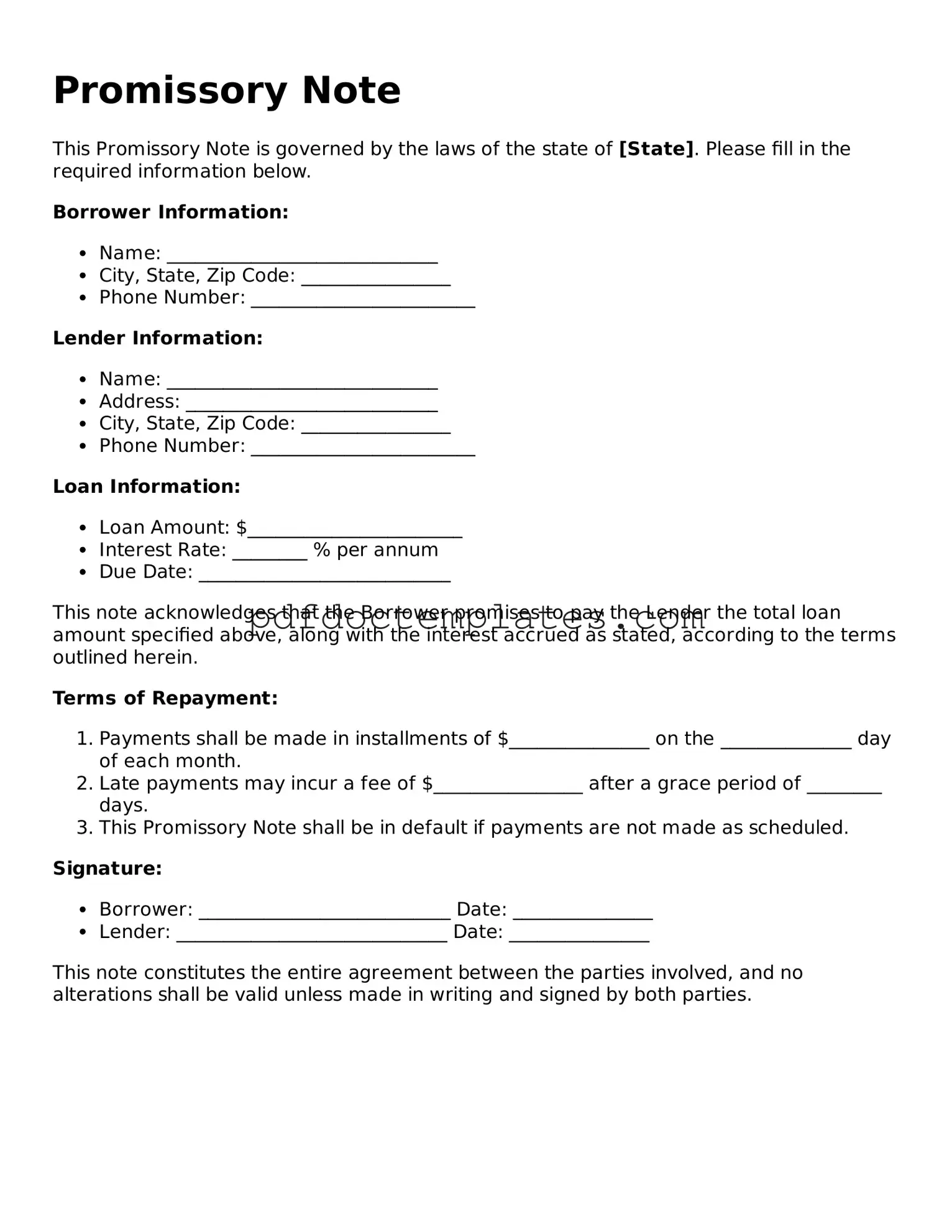Promissory Note
This Promissory Note is governed by the laws of the state of [State]. Please fill in the required information below.
Borrower Information:
- Name: _____________________________
- City, State, Zip Code: ________________
- Phone Number: ________________________
Lender Information:
- Name: _____________________________
- Address: ___________________________
- City, State, Zip Code: ________________
- Phone Number: ________________________
Loan Information:
- Loan Amount: $_______________________
- Interest Rate: ________ % per annum
- Due Date: ___________________________
This note acknowledges that the Borrower promises to pay the Lender the total loan amount specified above, along with the interest accrued as stated, according to the terms outlined herein.
Terms of Repayment:
- Payments shall be made in installments of $_______________ on the ______________ day of each month.
- Late payments may incur a fee of $________________ after a grace period of ________ days.
- This Promissory Note shall be in default if payments are not made as scheduled.
Signature:
- Borrower: ___________________________ Date: _______________
- Lender: _____________________________ Date: _______________
This note constitutes the entire agreement between the parties involved, and no alterations shall be valid unless made in writing and signed by both parties.
